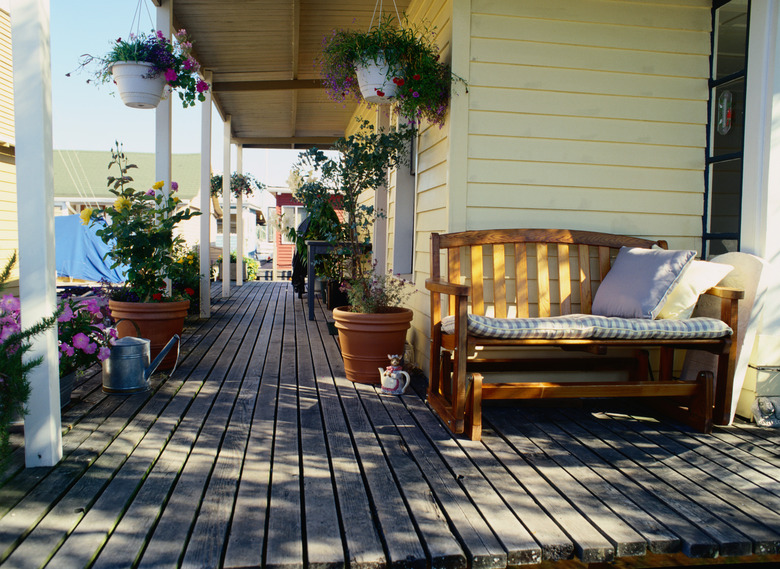How Much Should A Deck Slope?
Slope refers to the slant of construction projects like patios, concrete slabs and shower pans. This slant is important for one major reason: It ensures that the project keeps moisture or water from pooling and staying on flat surfaces, where it can leak down or cause dirt and mold problems. Sloping is a key part of deck construction, too; for most common decks, however, slope only pertains to part of the project.
Step 1
There is a difference between talking about the slope of the ground for a traditional deck, and the slope of the deck itself. The deck, the planks and boards that make its surface, should not be sloped. Not only is this difficult and unnecessary, but it can also be dangerous, making trips and falls easier. Moisture on a deck falls between planks on its own. It is the earth underneath that needs to be sloped.
Concrete Slope
Step 1
A concrete deck or patio is the exception to the deck slope rule. In this case, there is nowhere for water to go, so the concrete should be slightly sloped to encourage runoff. This is especially important for poolside concrete decks that receive a lot of a water. Use your level and trowel to make these decks slope downward out to the grass or pool, about 1/4 of an inch for every foot of space.
Step 2
- There is a difference between talking about the slope of the ground for a traditional deck, and the slope of the deck itself.
Ground Slope
Step 1
When building a traditional deck, you will need to slope the soil underneath the deck. It is this soil that collects the moisture, and you do not want the water pooling near your foundation. To this end, when preparing the surface for your deck, slope the ground away from the house about 1 inch for every 15 inches of space covered.
Ground Preparation and Measurement
Step 1
When sloping the ground, remove all sod to keep it from holding in moisture. When you finish sloping the soil and compacting it, you can cover the ground with 6-millimeter polyethylene to provide even more moisture protection. This works well if your deck sides will obscure the earth beneath so the plastic cannot be seen.
